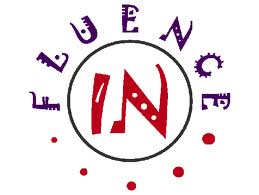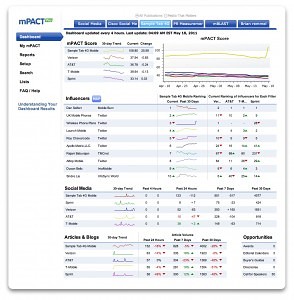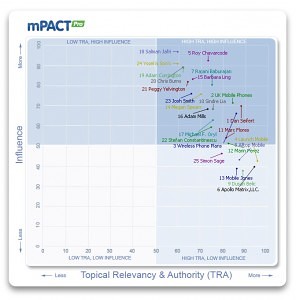 Influence has been my favorite topic of late; in fact, it’s been everyone else’s, too. Let me bring you back up to speed with a bunch of good reads (not to mention a five-post series right here with many guest bloggers) since my series ran:
Influence has been my favorite topic of late; in fact, it’s been everyone else’s, too. Let me bring you back up to speed with a bunch of good reads (not to mention a five-post series right here with many guest bloggers) since my series ran:
- Gini Dietrich writes at Spin Sucks about Peer Index vs. Klout In this post she talks about tree frogs, her new pet and friend for Jack, and she also shares that Peer Index is trying mightily to be produce authorities on various topics.
- Neicole Crepeau writes a heckuva intriguing post at Mark W. Schaefer’s blog, Grow, about a new way to measure and categorize influencers (she told me she is a “nerd” and this bit is all her intensity).
- Shakirah Dawud tagged an Adweek article on Twitter about the Klout score showing up on resumes (I told you so…there, had to say that again.)
- Judy Shapiro wrote a really good piece about why social media is a bad measure of influence (and she addresses that new influencer game, Empire Avenue (I’m staying far away from).
There’s another application I’d like to share based on a conversation and brief look at a beta site I saw yesterday. mBlast has products focusing on influencers and its flagship is mPact, rolled out earlier this year. mPact’s claim to fame is topicality as the filter of influence, and I liked what I saw although the kinks are still being worked out.
 They’ve got a free product, so you can check it out, too, and its fee-based offering is reasonable considering what you’re going to get. In fact, as a small business, it’s quite reasonable at the lowest level.
They’ve got a free product, so you can check it out, too, and its fee-based offering is reasonable considering what you’re going to get. In fact, as a small business, it’s quite reasonable at the lowest level.
One thing that resonated in my conversation with Mark Blount, vice president of mBlast, is about influence in general – it’s going to become more complex to sort through those with new social media influencer status, and the way to do that is going to be by using tools. Indeed.
(And, I especially like this Gartner-esque influencer map mPact offers…check it out…)
(images: TVArtists.org, mBlast)










